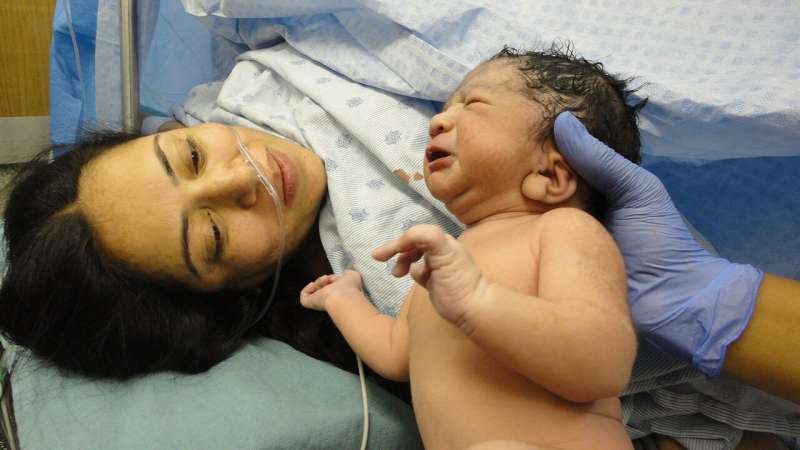
Clinical decisions made in the delivery setting as to whether to employ vaginal delivery or cesarean section are often made under high pressure, and with great uncertainty, and have serious consequences for mother and baby. Now, a new study of electronic health records spanning 86,000 deliveries suggests that if their prior patient had complications in one delivery mode, a physician will be more likely to switch to the other—and likely inappropriate—delivery mode for the subsequent patient, regardless of whether it is warranted for that patient’s indications.
Manasvini Singh, health economist at the University of Massachusetts Amherst and author of the study, which appears in the current issue of the journal Science, says this implies that physicians may sometimes rely not on scientific evidence, but on heuristics—simplified decision rules to aid complex decision-making—to determine their course of action, ultimately with sub-optimal effects on patient health.
Singh, an assistant professor of resource economics at UMass Amherst, analyzed inpatient electronic health record data across 21 years at the obstetric wards of two academic hospitals—one large and urban, the other small and suburban. Overall, the data covers 86,345 deliveries by 231 physicians, and she looked for complications such as obstructed labor, postpartum hemorrhage, fetal distress, perineal laceration, umbilical cord complications and obstetric trauma.
Singh found that depending on the model specification, complications in a prior cesarean delivery make the physician 0.6-2.4 percentage points more likely to switch to a vaginal delivery for the next patient, representing an increase of up to 3.4% in the probability of a vaginal delivery. Conversely, complications in a prior vaginal delivery make the physician 0.1-1.1 percentage points more likely to switch to a cesarean for the next patient, representing an increase of up to 3.6% in the probability of a cesarean delivery.
“Imagine that a patient’s vaginal delivery incurs a complication,” Singh explains. “The physician’s next patient now arrives for a vaginal delivery. Because of complications in the physician’s prior vaginal delivery, the physician will have a lower threshold—and therefore higher inclination—for deploying an emergency c-section during this next patient’s vaginal delivery, even if a cesarean is not clinically indicated for that patient. As a result, this next patient will be more likely to deliver via cesarean section.
“Now, imagine the converse example. The physician’s prior patient has a cesarean that incurs complications. Assume the next patient comes in for a vaginal delivery. Now, because of complications in the physician’s prior cesarean delivery, the physician has a higher threshold—and therefore lower inclination—for deploying an emergency c-section during the vaginal delivery, even if a cesarean is clinically indicated for that patient. As a result, this next patient will be more likely to deliver vaginally.”
“There is no clinical reason why the delivery decisions for two separate patients—linked only by the accidental chance of being seen consecutively by the physician—should be causally related to each other,” Singh writes. “However, when faced with the complex decision of deciding whether the current patient is suited for a vaginal or a cesarean delivery, physicians may instead be influenced—sub-optimally—by the outcome of the decision they made for their prior patient.”
Singh says that there are three reasons why physicians’ use of such heuristics is especially concerning.
“First, the serious and long-term effects of inappropriate delivery mode choices on the health of mother and child are well documented, making the use of heuristics especially risky,” she says. “Several global campaigns have even been launched to make delivery decisions more evidence-based. Second, switching delivery modes after a complication does not offer any guaranteed benefits, making it a potentially flawed rule. There is no evidence that switching delivery modes after a complication avoids further complications. Finally, patients are usually more averse to having inappropriate procedures performed on them than they are to receiving unnecessary tests, which suggests that we should hold greater reservations about the use of heuristics in this setting.”
“Even without further evidence of patient harm, such deviations in delivery mode choices should be concerning given the long-term harm that inappropriate obstetric choices cause mother and baby,” Singh says.
University of Massachusetts Amherst

